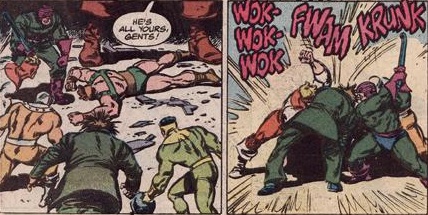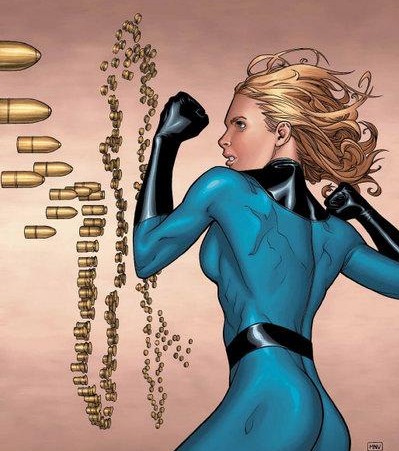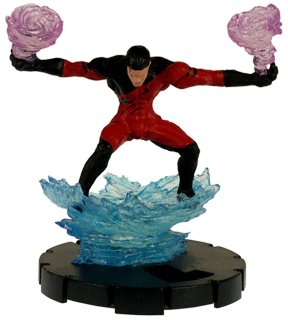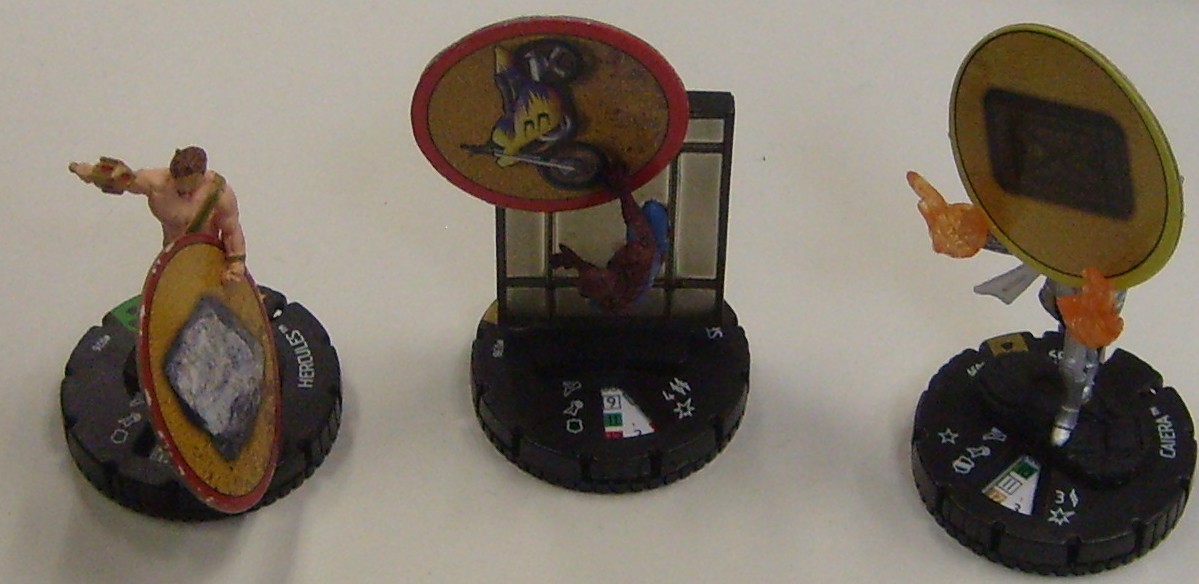Originally, both Injustice League and Masters of Evil got this identical team ability:
“When two or more friendly Injustice League team members are adjacent to the same opposing character, each team member may use this team ability to be given a close combat or ranged combat action which may target only that adjacent opposing character. The total number of actions given using this team ability during a turn requires only one action from your available actions for the turn, but each Injustice League team member given an action using this team ability receives an action token after the action has been resolved.”
Back when the rules allowed actions after being carried by a flier, this TA was pretty powerful and worth its points. But that hasn’t been the case since about 2003 or so. It got especially useless when the 2008 rules pretty much killed off ranged attacks in adjacency.
See, it seems that any ability that grants extra actions in a turn is priced pretty highly in the point formula. That’s why so many Masters of Evil characters seem to be at least a little overpriced compared to otherwise similar figures.

I’m thinking of you, M+M Wrecker.
Masters of Evil got a nifty upgrade in 2006 that made the expensive TA better worth its cost (I mean, can you imagine how incredibly bad that Wrecker would be with the old TA? Brrrrr). But Injustice League TA lingered in its old state for many years more…no doubt due, in part, to HeroClix’s unfortunate year-long dirtnap lasting from about this time in 2008 through 2009.
Finally, in 2010, there was this from the then-rules arbiter:
“When we were reviewing the team abilities, we knew that this was the one that needed a change. Like its predecessor, Masters of Evil, the team ability as worded just never sees very much play. Instead of just making it change to follow Masters of Evil, we tried to make the team ability more functional within the spirit of its original intention.”
That spirit was the Masters of Evil essentially all curb-stomping one guy at once.

So it got this rewrite: “Whenever a character using the Injustice League team ability attacks an opposing character that was attacked by another character using the Injustice League team ability this turn, the action does not count toward your available actions this turn.”
That’s basically the same thing as before, only it doesn’t require adjacency, finally letting the dastardly villains gang up on enemies from a distance. It’s a very positive change.
It’s still sub-par.
It still only saves actions from being eaten up. But on your average 300-point team, using up actions is not likely to be a problem at all, given the 95-point average cost of Modern Age Injustice League team members. (So you’ve only used one action of the three in your pool. So what? You only had three characters anyway.) Sure, you could bolster your swarm by adding wild cards, but it’s still a weak ability for the point cost.
At the same time, I’m not a fan of simply making it a clone of Masters of Evil again. Doing so the first time was just lazy design, in my opinion. Apparently, WizKids thought so, too.
Perhaps IL should take a hint from this year’s change to Leadership. Instead of simply granting some extra, but largely unneeded (and conditional) actions, what if it really increased action totals by also removing tokens like Leadership can now? That way, it benefits not only the swarms but also the higher-priced two-member squads.
Therefore, the #8 most-needed change to HeroClix is this rewrite to the Injustice League team ability:
When a character using this team ability makes an attack, after actions resolve another character using this team ability can immediately make an attack on the same opposing character that doesn’t count toward your available actions this turn. At the end of your turn, remove an action token from each character that used this team ability to make an unsuccessful attack this turn.
Saving actions is fine, but getting more consecutive actions is better. This version keeps the gang-pile spirit of the power but makes it better for bigger-cost Injusticers and their lower-AV friends.


















